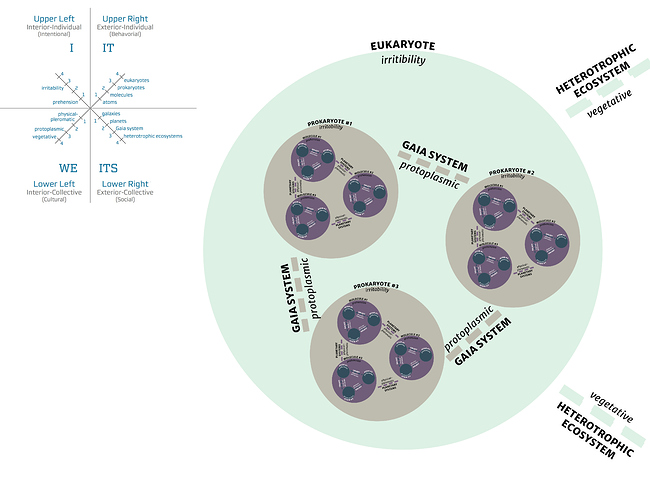I’ve been considering the Quadrants a lot recently. When I look at them graphically it feels a bit static… I am trying to get a more dynamic representation… Each quadrant is in continuous feedback with its neighboor and diagonally, giving me 6 feedback loops shown with the arrowed lines. Also, another exemplar of feedback is the butterfly like effect I drew in mustard… I would love to hear feedback about this perspective, and be pointed to any existing information reflective of these ideas.
Good idea! Lately I’ve been delving into complex adaptive systems theory, which features similar insights about natural, social, and information systems. Namely, system boundaries are permeable and in interactive relationships with their environments. Older systems theory was prone to reification - systems were like static “things”. More current thinking on such topics see systems more like force fields with a kind of vibrational action that recreates themselves (or evolves themselves) though a multiplicity of processes and feedbacks.
Anyway, your diagram aptly symbolizes that sensibility, so I look forward to further discussion and elaboration.
I love this, and I think it’s important to play with as many different visual conceptions of the quadrants as possible, as it helps remind us that these are not inert or separate categories. That is, if you change one element in any of these quadrants, you are creating positive and negative/normative feedback loops that perpetuate through all other quadrants. Some of those feedback loops are stronger than others (changing a factor in the LR, for example, will have a more dramatic effect on and individual mind, then changing an individual mind will effect systems in the LR).
Another vector you might consider is something like a z-axis — the different kinds of feedback loops that can emerge among multiple stages of wholeness within any of the four quadrants, and between any of the four quadrants.
Here is a somewhat different graphic I am playing with to illustrate the four quadrants in a slightly different way – sort of tipping the quadrants on their sides so we can have a somewhat different view of what these quadrants are actually describing (zoom in to see the multiple levels of nested holons).
Generally agreeing with Corey’s take on quadrants with feedback relationships. Going in a different direction with it though. Corey went bigger. My aim is smaller and more detail-oriented.
For example, I’d like to explore social science perspectives on the mechanics of UL-LL relationships. The larger goal of that is to understand cultural change processes over time.

